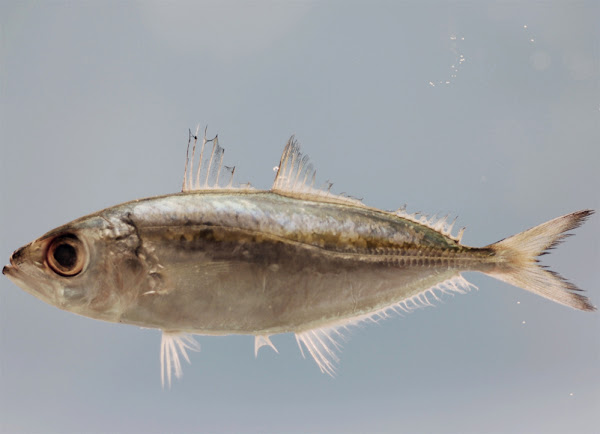The Bigeye scad fish is an oceanic fish which is mainly found in tropical regions throughout the world.
It is also known by some other common names such as Akulu, Coulirou, Jacks, Chicharro, Goggled-eyed scad, Purse-eyed scad and many more.
Bigeye scad fish are distributed throughout the world, in tropical and subtropical marine waters.
In the western Atlantic Ocean it is known from Nova Scotia south along the U.S. coast, Bermuda, the Bahamas, throughout the Gulf of Mexico and Caribbean Sea, and along the South American coast to Rio de Janeiro, Brazil including Trinidade Island.
Today Bigeye scad fish is a very popular food fish throughout the world. Read some more information about this fish species below.
Bigeye Scad Fish Characteristics
Body of the Bigeye scad fish is elongated and moderately compressed, with lower profile slightly more convex than the upper. It is blue-green or green on it’s back and sides, and white on the underside.
As the name suggests, the eyes of these fish are very large as compared to their body size. Their upper jaw is moderately broad at the end, and extending to below anterior margin of pupil.
They have small and recurved teeth. They have moderately small and cycloid scales, covering body except for a small area behind pectoral fins.
Average body length of these fish is around 15 inches. And they can reach around 230 grams live body weight. Photo and info from FAO and Wikipedia.

Diet
The Bigeye scad fish are feed on small invertebrates, fish larvae and zooplankton.
They are nocturnal, and feed mainly on plankton or benthic invertebrates including crabs, shrimps, foraminifers and also on fish.
Breeding
Spawning season of the Bigeye scad fish can vary from place to place. In Hawaii the spawning season is from April through September or October. It’s life cycle is rapid and short.
Uses
The Bigeye scad fish is mainly used for food. It is also used for it’s oil and making fishmeal.
Special Notes
The Bigeye scad fish are found throughout the world. And they are very popular as a food worldwide.
They generally prefer clear oceanic waters around islands to neritic waters. They are commercially very important fish in some countries.
However, review full breed profile of this fish species in the following table.
| Name | Bigeye Scad |
| Kingdom | Animalia |
| Phylum | Chordata |
| Class | Actinopterygii |
| Order | Perciformes |
| Family | Carangidae |
| Genus | Selar |
| Species | S. crumenophthalmus |
| Binomial Name | Selar crumenophthalmus |
| Other Names | Also known as Akulu, Coulirou, Jacks, Chicharro, Goggled-eyed scad, Purse-eyed scad, Horse-eye Jack, Horse Mackerel, Jack, Jackfish, Silver scad, Steenbrass and many more |
| Breed Purpose | Mainly food, also fishmeal and oil |
| Special Notes | Economically important fish species, commercially catched in many countries around the world, popular as food fish, also used for making fishmeal and oil |
| Weight | Around 230 grams |
| Breeding Method | Natural |
| Climate Tolerance | Almost all climates |
| Body Color | Blue-green or green on the back side and white on the underside |
| Rarity | Common |
| Availability | Worldwide |






